This post may contain affiliate links. By clicking and making a purchase through the links, I earn a small commission at no extra cost to you. See my disclaimer for more information. This and display ads allow me to keep the site up to date and give back.
I’m lucky enough to come from a place where I can see whales from my backyard (Newfoundland)! And growing up with these majestic creatures instilled a deep love for them. Even when I’m traveling, I love to go on whale watching trips and find different species. And what I’ve learned is that whale watching is something you can do all over the world!
I wanted to share my favorite whale encounters with you, but to make the best post possible post I asked the travel blogging community where their favorite whale watching spots are too. And the response was huge!
It was so big that I’ve broken it down into two posts. This first part covers the best whale watching destinations in the Northern Hemisphere: Canada, USA, Europe, and Asia. The second part of the series covers the best whale watching destinations in the Southern Hemisphere: South America, Africa, Oceania, and Antartica.
Get inspired for your next whale watching trip!
Whale Watching in Canada
Whale Watching from Land & Sea in Newfoundland
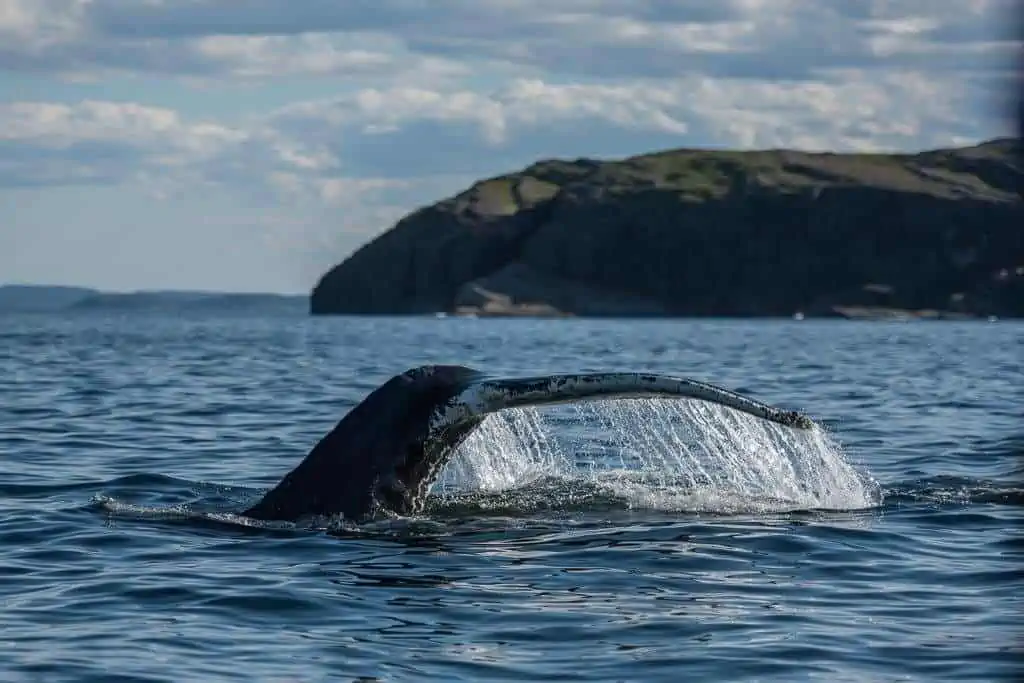
Recommended By Brooke & Buddy of Trailing Away
Every year, thousands of humpback whales swim along the coast of Newfoundland – the largest population of feeding humpbacks in the world. The best time to see them is from May to September, at which time 21 other species of whales and dolphins can be seen as well. If you are lucky, you may even spot a few icebergs and puffins, too!
Taking a boat or sea kayak tour is a great way to get an up-close look at these gentle giants of the ocean. However, some tours are better than others. On our trip, we went with Molly Bawn in Mobile, Newfoundland (about 40 minutes north of St. John’s). With small tour sizes and a knowledgeable, yet fun marine biologist as our guide, this tour really stood out from the rest who seemed to pack visitors in like sardines.
But, if a tour just doesn’t fit into your budget or you get sick at sea, there are places to see the whales from land as well – which is a different, but still a special experience. While you can see them from many of the seaside hiking trails, one of the best places to get an up-close view is St. Vincent’s Beach. Here, there is a steep drop-off just off the shoreline where – if you are lucky – the whales can be swimming just a few feet away from where you are standing. Amazing to see!
Read more ideas for adventures in Newfoundland here.
Whale watching in Cape Breton, Nova Scotia
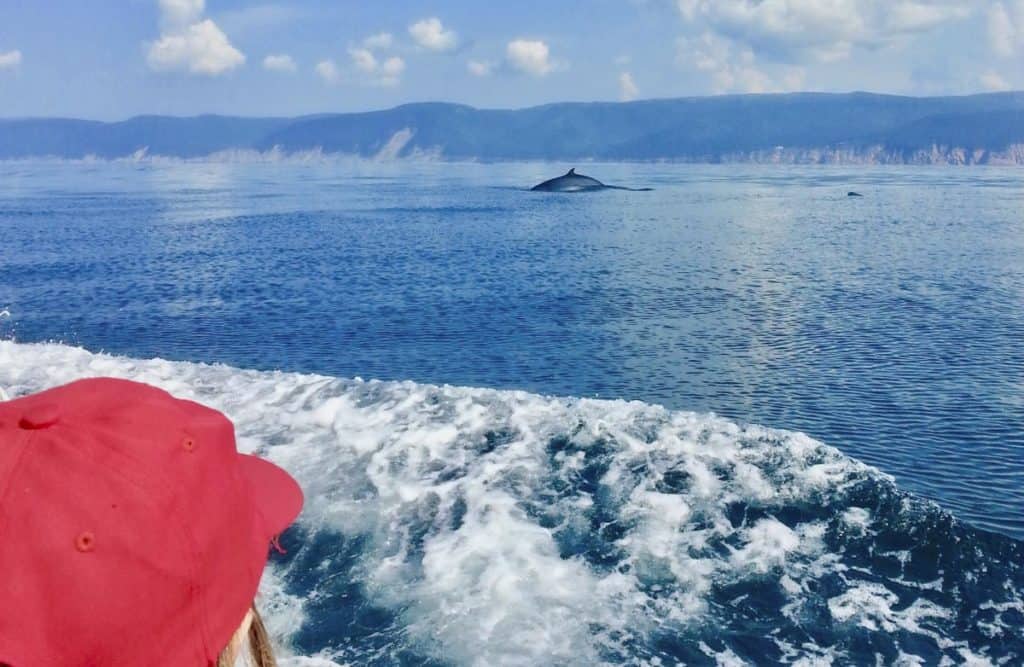
Recommended by Kate of Tear Free Travel
Make sure to add Cape Breton, Nova Scotia to your whale watching destination list. Not only is Cape Breton one of the most beautiful parts of Canada, but it offers some amazing whale watching in Pleasant Bay. Whale watching season runs from June 1st to October 19th (peak July 15th -Sept 15th). You can see a large variety of whales off the Nova Scotian coast including Minke, Sperm, Blue, Humpback and Pilot whales.
We went with the tour company ‘Guaranteed Whales’ and they lived up to their name! We saw 3 pilot whales on our short excursion as well as lots of interesting birds and even a baby seal! These tours get busy during the summer season, so it’s best to make your reservation in advance online. While you are there, be sure to check out the beautiful Cabot Train including the iconic Skyline Trail, which is not to be missed when you head to Cape Breton on the East Coast of Canada.
Whale Watching in Tadoussac, Quebec
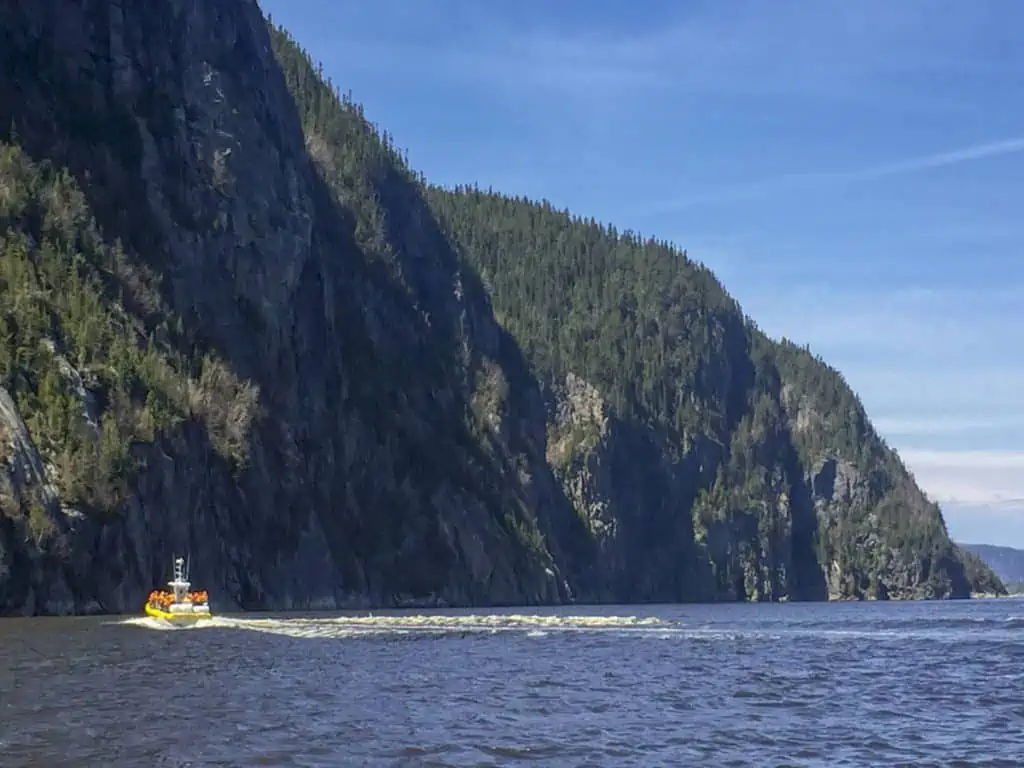
Recommended by Cate Brubaker of International Desserts Blog
One of the best places in the world to go whale watching is the Saguenay Fjord near Taddousac in Quebec, Canada. A few hours north of Quebec City, it’s an easy day trip. Or you can spend a few extra days in the area, as it offers lots of wonderful outdoor adventure opportunities. You can book a whale watching cruise on a sightseeing boat, on a smaller zodiac or even a sea kayak tour.
While there are 13 different kinds of whales in the area, you’re most likely to see beluga and blue wales. The best time for whale watching in Quebec is May through November. We opted for a zodiac tour when we were there in mid-May and saw both blue and beluga whales from a distance. My tips: book in advance, arrive early so you can find a place to park and have enough time to find the meeting place and bundle up if you go in the cooler months.
Whale Watching in Churchill, Manitoba
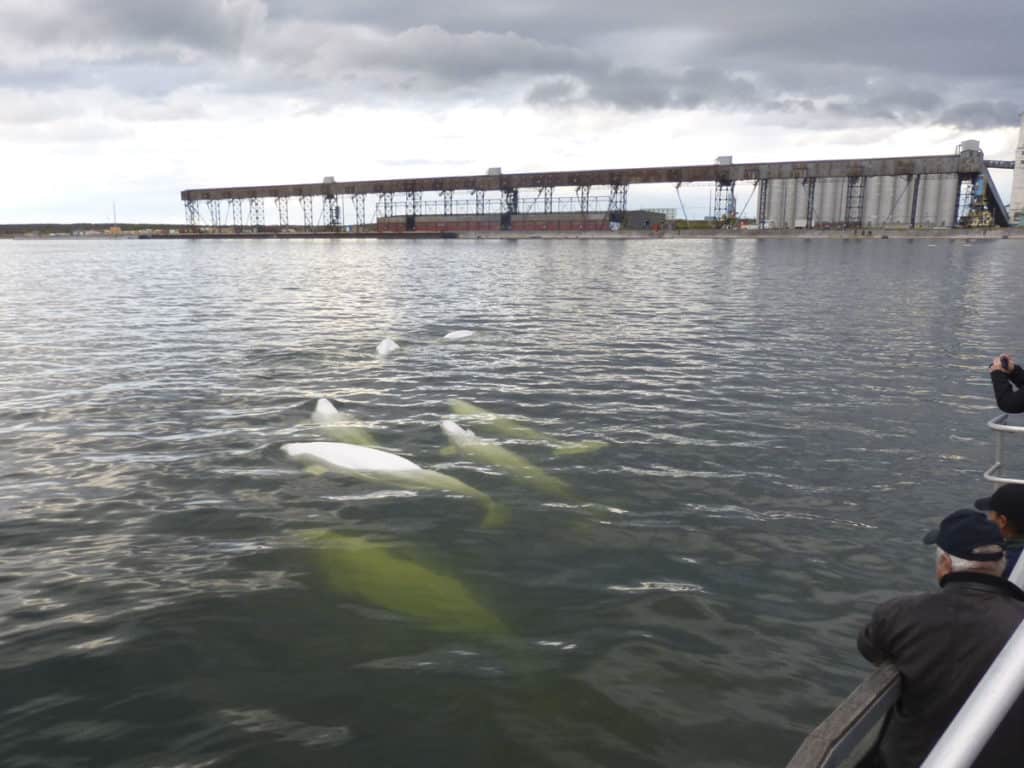
Recommended by Lisa from TheHotFlashpacker
Thousands of Beluga Whales congregate at the delta of the Churchill River and the Hudson Bay every July and August. The town of Churchill, Manitoba is the base to go whale watching. There are five ways to see these whales. While it’s possible to spot the whales from the beach in Churchill or the shore of the river, the other ways to see the whales involve tours.
The least adventurous way is to take the whale watching boat, complete with a hydrophone to listen to their calls. The Beluga calls are quite funny – from high squeaks to fart-like noises. If you want to get even closer to the Belugas, you can view them by Zodiac boats. Another thing you can do is kayaking – it’s not for the fainthearted as the river is quite swift and the whales get quite close to your kayak. The most adventurous way to see Belugas is to snorkel with them! Put on a wetsuit and hope for clear water.
If viewing these unique whales isn’t enough, it’s quite common to see polar bears on the shore during your whale watching experience – if a polar bear is in the area, the tour captain will make a detour for this once-in-a-lifetime opportunity. I was lucky to spot bears from Beluga trips on two occasions – one big male bear, and a mother and cub as well.
Whale Watching in Vancouver Island, British Colombia
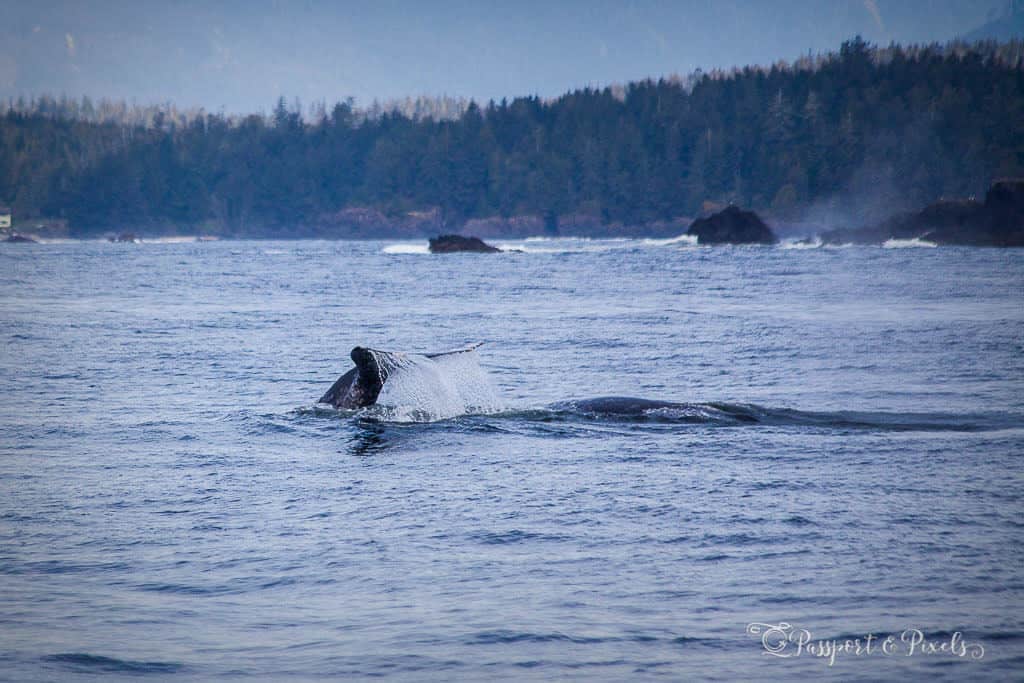
Recommended by Bella of Passport and Pixels
Famous French oceanographer Jacques Cousteau described the waters around Vancouver Island, just off the west coast of Canada, as one of the best places in the world to spot Orcas. Three pods of about 80 resident Orcas live around the southern tip of the island near the capital Victoria, and around 200 more live in the north of the island so you can see them all year round.
It’s not just Orcas, either. Between February and April, the 20,000 strong Pacific Gray whale migration passes right by Vancouver Island on its way north from Mexico to their summer feeding grounds in the Arctic, returning in November. They’re so easy to spot that Vancouver Island is one of the top places in the world for scientists to study them.
Humpback whales are most often spotted in the summer months, and you may also see Minke whales and porpoises, as well as plenty of sea lions.
The most popular places to go whale watching on the Island are the capital, Victoria, and Ucluelet or Tofino on the west coast. Trips last around three hours and some offer the chance to listen to the whales’ song through a hydrophone. Make sure you wrap up warm though, even in the summer the chill Pacific breeze can get right into your bones after three hours on a boat.
Whale Watching in the USA
Whale Watching in Bar Harbour, Maine
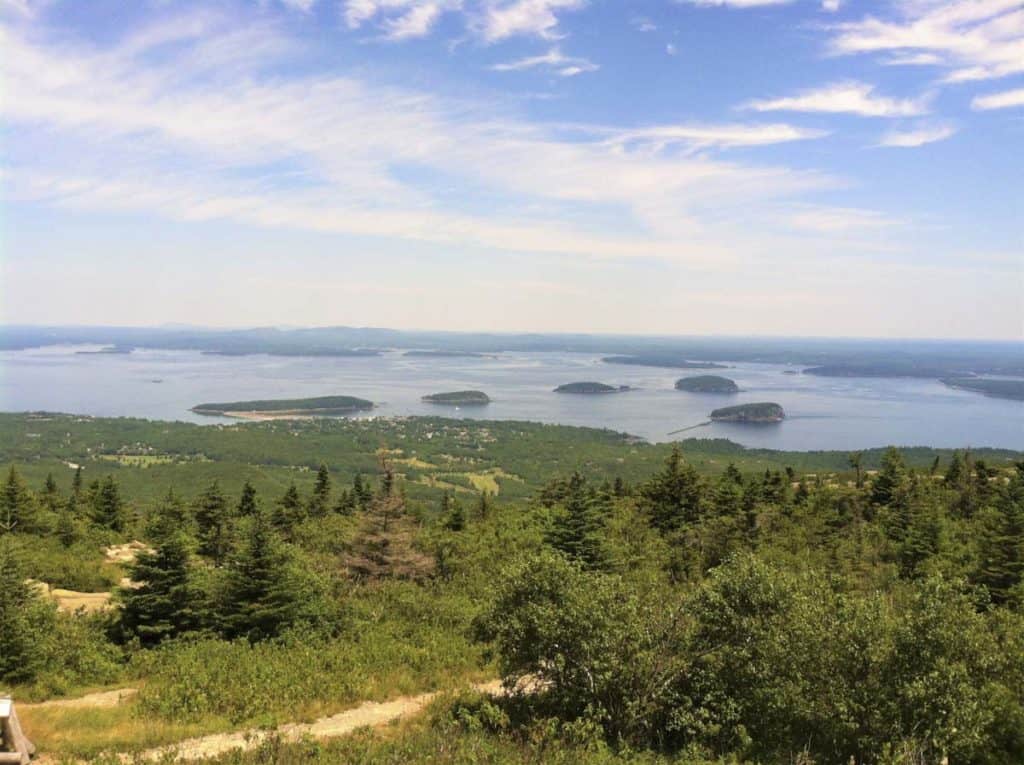
Recommended By Ladona of Walking the Parks
A rich ecosystem can be found 20 to 40 miles offshore from Bar Harbor Maine which is the summer feeding grounds for humpback, finback, and Minke whales. Here whales can easily be seen breaching the water from mid-April through October.
Visitors to nearby Acadia National Park swarm to Bar Harbor to join whale watching tours on warm summer days. It’s best to order your tickets in advance online as tours often sell out. Be sure to check the weather first! It can be 20-25 degrees cooler on the Atlantic than on shore. So if your day starts out cold it’s sure to be frigid on the water.
We found binoculars very helpful. A camera that can get a long distance shot is great for good pictures. Although, we were able to capture an amazing video with just our iphones.
Bar Harbor is also home to Allied Whale, the marine mammal laboratory at College of the Atlantic. Students and researchers work together at this unique college to study these amazing creatures. It’s common to find these same students working on your whale watching tour documenting the whale activity for future researchers.
Whale Watching in Cape Cod, Massachusetts
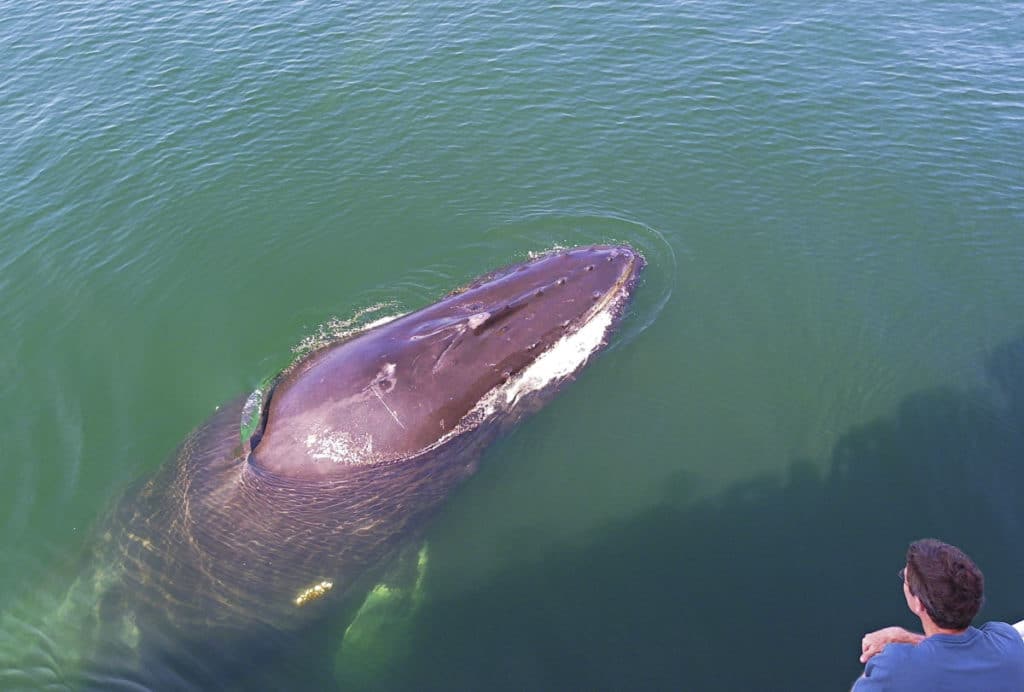
Recommended by James Ian of Travel Collecting
I’ve been on many whale watching cruises, but the best whale watching trip I ever took was from Cape Cod in Massachusetts in the northeast of the United States. The season runs from mid-April through October with the best time to go from June to September, which coincides with the main tourist season. There are Humpbacks, Finbacks, and Minkes. I took a cruise from Provincetown and saw several humpbacks.
It’s always lovely to be out on the water in the sun, but we were there to see whales, and we didn’t have to wait too long. The humpbacks were out to play! The whale watching industry is regulated for the protection of the whales, and boats aren’t allowed to approach within 200 meters/ yards of the whales. But there are no rules for the whales! They swam up so close to the boat that I could have reached out and touched them if the deck was at water level (not that I would, of course). They breached, raised their flukes and side fins and rolled around right beside us. It was incredible!
Whale Watching in San Juan Islands, Washington
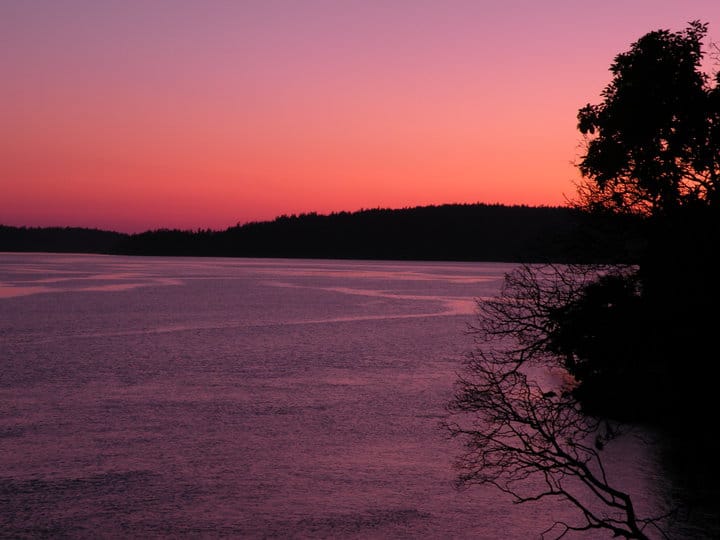
Recommended by Abbie of Speck On The Globe
In the far northwest corner of the US between Washington and Vancouver, BC sits the San Juan Islands, with fantastic opportunities for wildlife observation, especially whale watching. Orca whales migrate through this region from May through September and the islands are some of the best places in the world to spot Orca Whales. While there are several tour operators that offer boat trips, these whales can be seen from shore on several points on different islands.
Lime Kiln Point State Park is known as “whale watch park” so you have great chancing for spotting there. Friday Harbor is another location on San Juan that offers views of the migratory path for Orcas. Taking a whale watching cruise off Orcas Island provides a way to navigate through the waters around the San Juan Islands and find multiple pods of whales playing throughout the Puget Sound.
Getting to the San Juan Islands is easily reachable by ferry from Anacortes, Washington. It’s an easy drive from Seattle so you can add this to your city sightseeing when visiting Washington state.
Whale Watching in San Diego, California
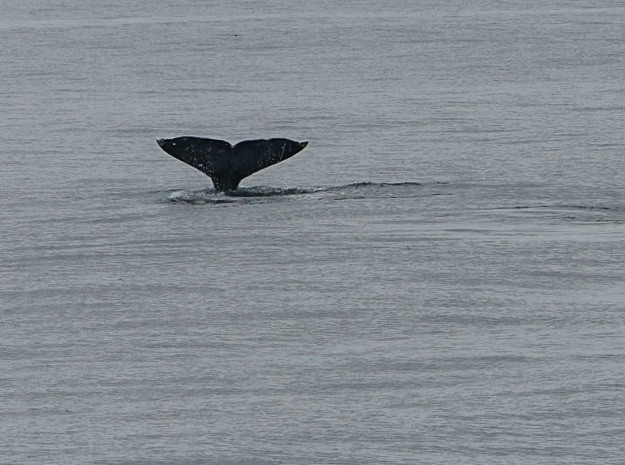
Recommended by Maria of MariaAbroad
San Diego is a great spot for whale watching as you can see various different species there at various times each year.
From December through January and March through April, you have the grey whale migration passing through. Your best chances to see grey whales, such as the one in the photo, is in mid-January when up to 8 animals per hour pass through the area. They also come pretty close to shore, so sometimes you get lucky to spot them from some of the cliffs overlooking the ocean, such as from the terrace of the Birch Aquarium, Point Loma Lighthouse, or Torrey Pines State Park. Chances to see them are pretty high, as over 20,000 animals pass through San Diego each way.
From Mid-June through September, you might have a chance to spot blue whales, humpback whales, minke whales, and finback whales during your Whale Watching Tour in San Diego. A few miles off the coast, there is a sharp drop off in the ocean floor, and the spot is a popular feeding ground for a pod of about 2-3000 blue and humpback whales. However, chances to spot whales in the summer months, while still often the case, not as common as during the winter season.
Whale Watching in Monterey Bay, California
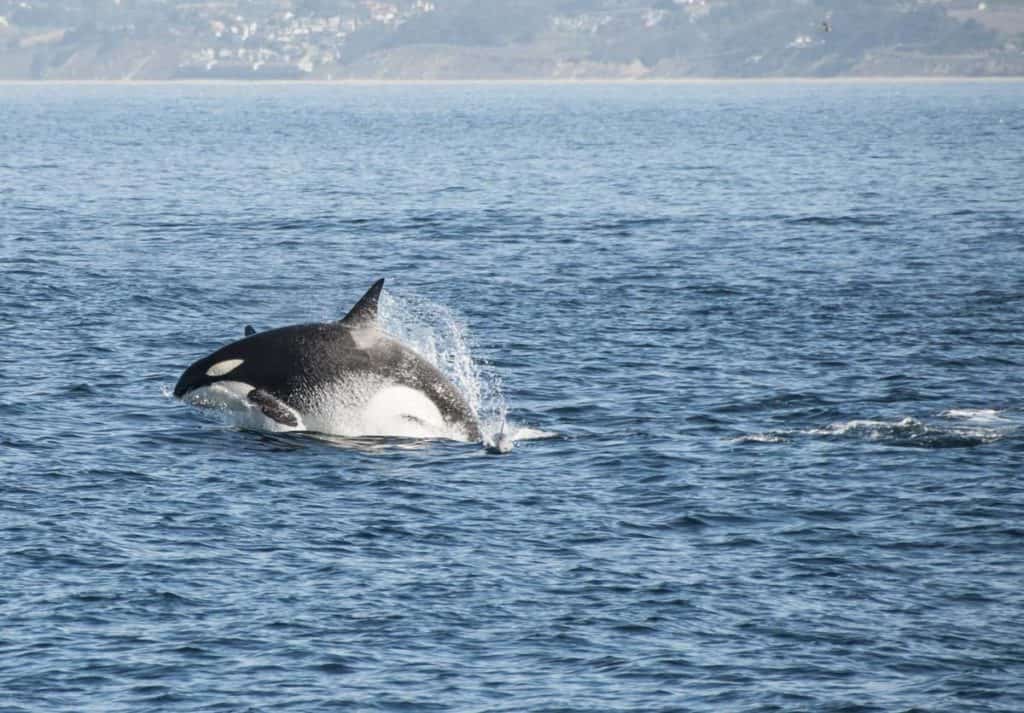
Recommended by Suzanne Jones of The Travelbunny
California is one of the world’s best places for whale watching and there’s a good reason for this. Beneath the ocean in Monterey Bay is one of the deepest canyons in the earth’s seabed. It’s brimming with life and many types of whale head there during migration time to feed.
We took a boat trip out into the bay to see if we could spot whales. We weren’t disappointed and saw a range of cetaceans. With the help of an onboard marine biologist, we were informed about the whales’ behavior and how they live and survive in the oceans. Of course, all boat trips aren’t the same and it’s important to choose wisely.
Our boat company was ethically conscious and had live commentary from an onboard marine biologist. Others have recorded commentary, over-fill their boats and get too close to the whales.
We watched as a pod of Orcas taught their young to hunt, we witnessed massive humpbacks breach and slap their tail fins and were amazed as a pod of around 300 dolphins flashed through the water dipping and diving. We were out for over 3 hours and it was one of the most amazing wildlife encounters I’ve ever had.
For the best whale watching head to Monterey Bay in late spring, summer and autumn (April to end November) during migration time. You should see Humpback whales, Orcas, and dolphins. If you’re lucky you may see a blue whale. In winter and early spring, there are chances that you might see grey whales and dolphins but the other species will have migrated and passed through Monterey by then.
Find out more about whale watching in Monterey Bay.
Whale Watching in Seward, Alaska
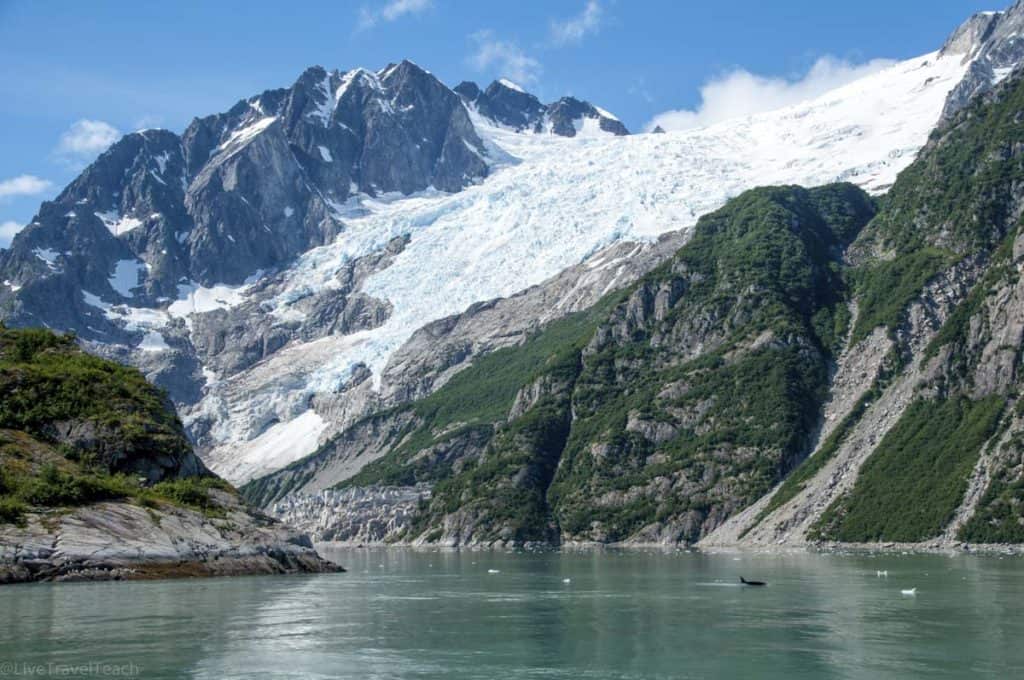
Recommended by Mike Still of LiveTravelTeach
Seward, Alaska is the best place for whale watching because you have the opportunity to see humpbacks, orcas, gray whales, fin whales and minke whales in Kenai Fjords National Park. In addition to these 5 breeds of whales you’ll find countless glaciers and tons of other wildlife. The entire fjord is a wildlife wonderland with nutrient rich waters bringing seals, sea lions, puffins which in turn entices whales to come back year after year. I’ve been on a handful of whale watching tours that start in Resurrection Bay and head into Kenai Fjords National Park. The great thing about Kenai Fjords is that the mountain and glacial landscapes keep you in awe while the whales and other sea life swims beneath the waves.
Whichever tour you pick in Seward you are sure to enjoy this magical destination. Still on my bucket list is to kayak around Resurrection Bay for the chance to see some whales from a new perspective. If you join one of the larger whale watching tours, the ship captains know where to find beautiful waterfall filled coves and wildlife hotspots making your trip even better! If you’re heading there in the summer be sure to reserve your tour ahead of time. Seward is a main port for many cruise ships bringing lots of tourists to an otherwise small town on the Kenai Peninsula.
Seward is a short drive from Anchorage and the highway just outside of town is one of the most scenic drives in all of the United States. There are countless hikes and other outdoor activities nearby too so I hope you get to go whale watching in Seward soon!
Whale Watching in Maui, Hawaii
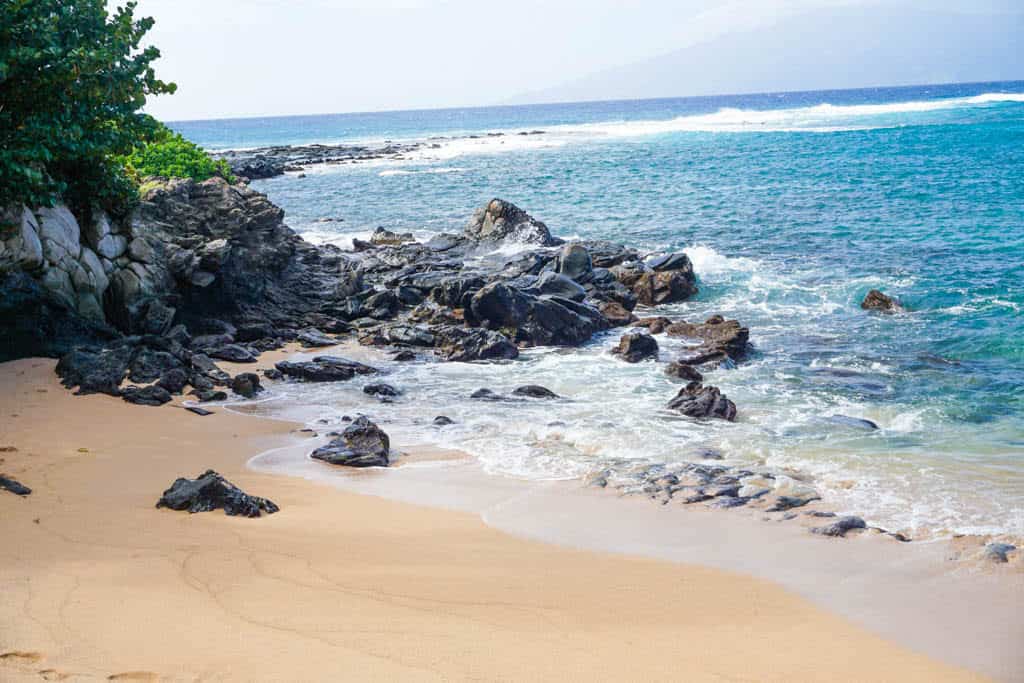
Recommended by Chris from Explore Now or Never
Add whale watching to your Hawaii bucket list! If you head to Maui, Kauai or the Big Island between November and April, you’re likely to spot humpback whales here. Humpbacks are one of the larger whale species, with adults up to 16 meters and weighing in around 25 to 30 metric tons! More than 10,000 of them migrate to Hawaii’s protected waters from Alaska for summer feeding. Some of them make this 3,000-mile journey in just 36 days, while others can take up to four to six weeks to arrive.
When we went whale watching off the coast of Maui in January, it was like “whale soup” on the ocean because there were so many of them. Even still, it took a while for our eyes to become practiced enough to spot the pools of calm ocean water just before a whale breached.
We enjoyed a beautiful ocean adventure learning all about these lovely mammals on our half day tour with Pac Whale Eco Adventures out of Lahaina as we watched the whales frolic with their young, spout, and generally entertain us. Best of all, this nonprofit donates all profits to support the Pacific Whale Foundation’s research and conservation efforts.
Whale Watching in Big Island, Hawaii
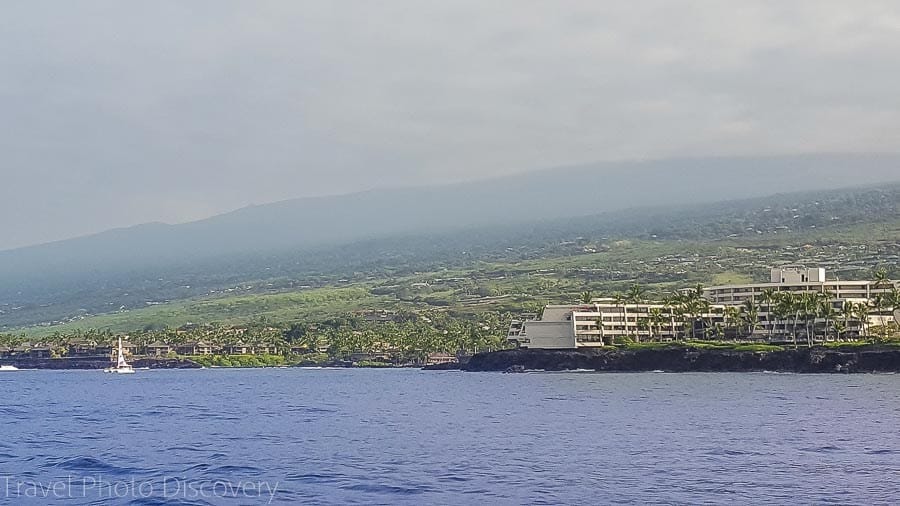
Recommended by Noel of Travel Photo Discovery
The Big Island of Hawaii is the winter destination of humpback whales that coming from their northern migration in Alaska to enjoy the warmer waters and have their offspring. The calm and protected waters in the Big Island and along various other islands are the perfect place to raise their newborn until they are ready to take the long journey back to Alaska for feeding. Although there are areas that you can watch the whales passing through and relaxing, the best way to see these whales up close is to take a boat tour.
There are many different boat tours around the west side of the island and one of the most popular is the snorkeling tour with Body Glove tours which includes the whale discovery sightings along the way to the snorkeling destination. It’s a great tour to do with family and you can see highlights of the Body Glove tour here that we took of the event for inspiration and enjoying the west side of Kona on the Big Island.
During whale season, its also easy enough to pick a coastal viewpoint and wait patiently over the horizon to see some of the typical water spouts when the whales are surfacing and create a spectacular display of breaching, whale splashes and fin splashes, which is their typical way of communicating and enjoying their experience in the channels off the shores.
Whale Watching in the Caribbean
Whale Watching in Dominica
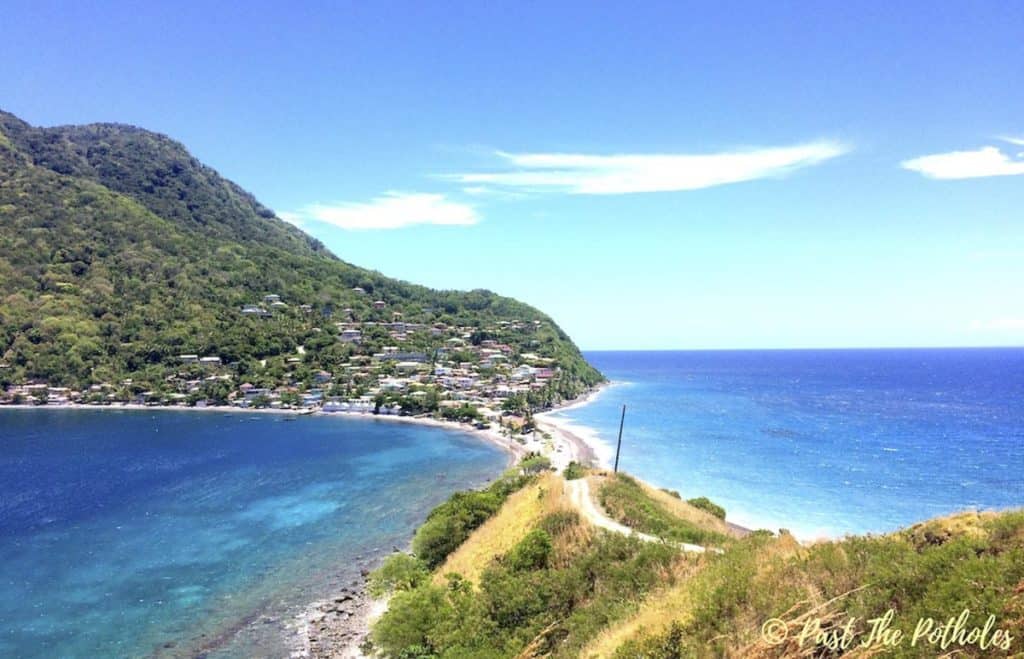
Recommended by Claire of Past the Potholes
Whale watching in the Caribbean doesn’t get any better than in Dominica. Companies in this small island in the West Indies boast a 90% success rate year round. Off the western coast of the island, the ocean floor drops off rapidly and creates the perfect breeding and feeding ground for a number of species, including the largest predator on earth, the sperm whale. With a year-round resident sperm whale population so close to shore it’s one of the best places in the world to see these amazing creatures.
Dominica carefully protects these creatures and the government has now actually listed them as a national treasure. Tours are highly regulated to ensure the safety and well-being of the whales and most operators use hydrophones to unobtrusively locate nearby whales. The probability of seeing sperm whales is very high all year although the best season is between December and March when the males return to the area. In addition to these giants pilot whales, dolphin pods and even humpback whales are also fairly common.
Whale Watching in Central America
Whale Watching in Puerto Escondido, Oaxaca, Mexico
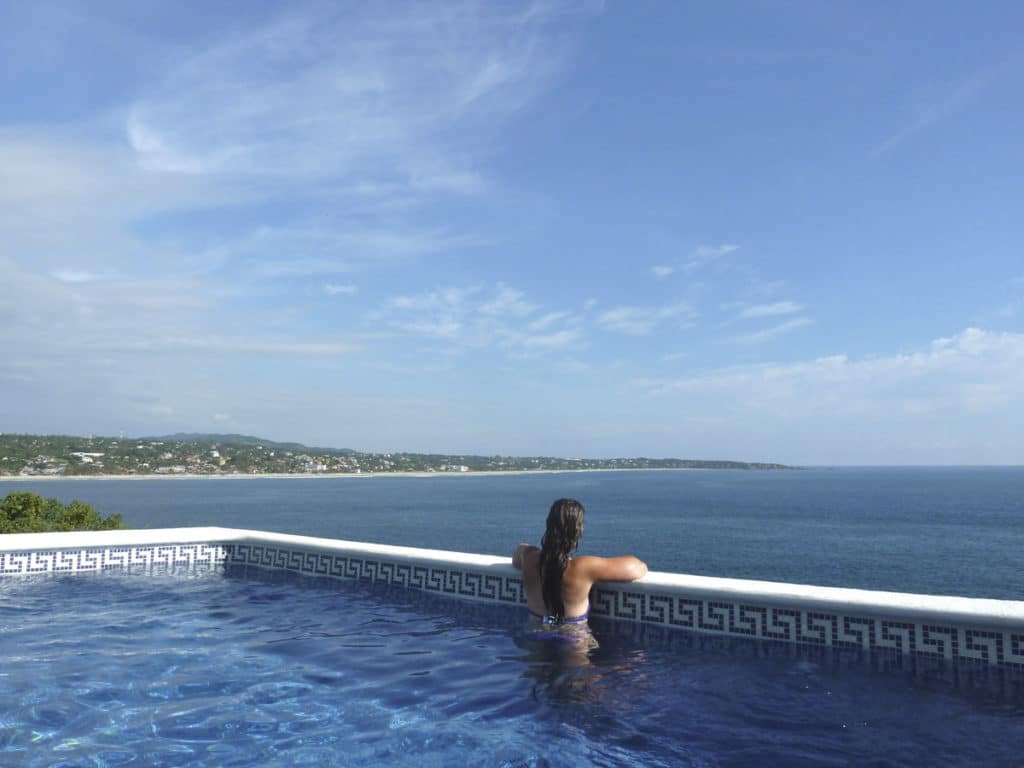
Recommended by Michele Peterson of A Taste for Travel
Although the city of Puerto Escondido on Mexico’s Pacific Coast in the state of Oaxaca is best known as a surfing destination, its coastal waters are also a prime location for watching a wide variety of marine life. One of the top things to do in Puerto Escondido is to go whale and dolphin watching. The plankton-rich Pacific waters are abundant with spinner and bottlenose dolphins year-round, but from November to February it’s also possible to see migrating orca, humpback and pilot whales as they head south to give birth to their young.
Local whale watching tours offered by sightseeing boats are a popular way to see these incredible marine mammals up close but it’s also possible to witness the whales from the shore. Personally, I think this is the best way to enjoy their majesty without interfering with their feeding or other natural behaviors as local tour providers don’t always follow speed restrictions or 100 meters (or 200 in some cases) buffer zones between whale watching vessels and whales, a distance recommended for sustainable whale watching.
Top spots to see whales offshore include Vivo Resort, Eglantina condominiums, and Posada Real Puerto Escondido because each of these properties is located either on a beachfront or on a clifftop offering prime vantage points for viewing whales surfacing and expelling air through their blowholes. It’s also often possible to see calves swimming alongside their mothers in the main bay of Puerto Escondido or offshore at Playa Bacocho.
Whale Watching in Cabo Mexico
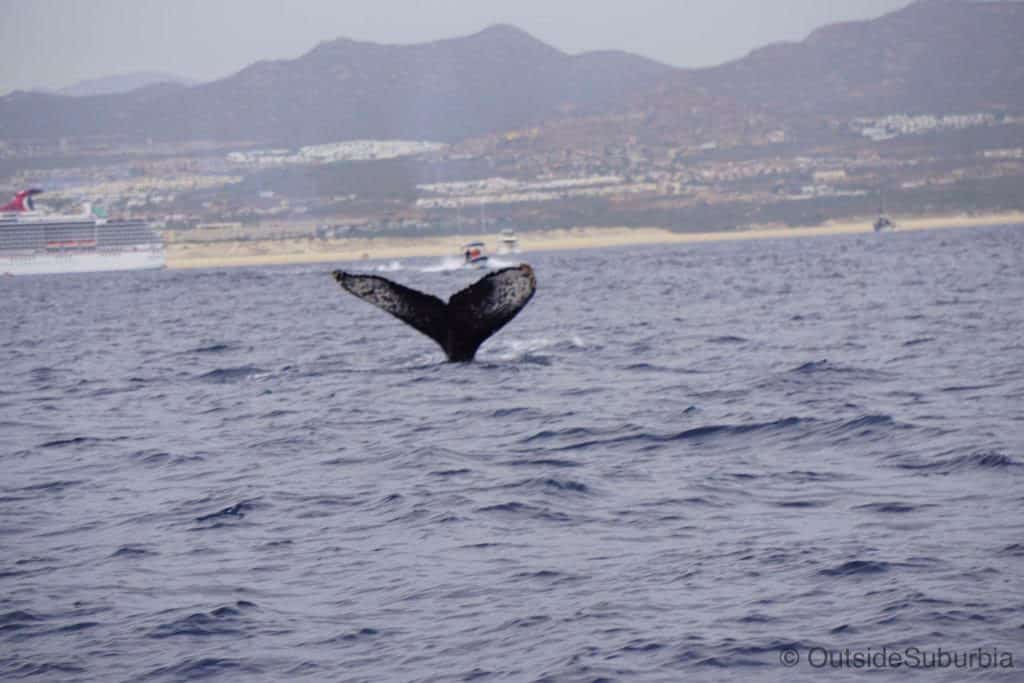
Recommended by Priya of Outside Suburbia
Cabo, Mexico is a great place for whale watching, each year in early autumn, when the seasonal change occurs hundreds of whales migrate from the frigid waters of the Arctic to the warm, calm waters surrounding the Baja Peninsula. In the blue waters near Cabo, you can see them playing during the months of December through March.
Of the 11 species of whales found around the world, eight venture to the waters off Cabo San Lucas, including minke, bryde, fin, sei, humpback, gray and blue. The ideal climate, shallow waters, salinity, and abundant marine life make the bays and lagoons of Los Cabos the perfect place for whales to birth and rear their young. The six-month, round-trip is the longest trip made by any animal in the world. We spotted a couple of humpback whales while on a boat ride in Cabo, we even saw one whale blow a bushy stream of misty spray at the surface of the water.
Whale Watching in Uvita, Costa Rica
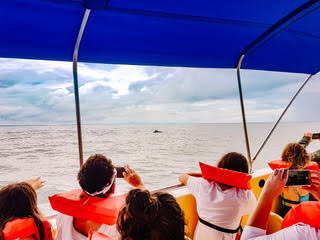
Recommended by Sarah of Costa Rica Vibes
From late July until early November Humpback whales make their way to the ocean near Uvita, Costa Rica. During this time you can take a whale watching tour through a variety of companies in this quirky beach town. Most tours cost about $90 and last for approximately three hours.
The absolute best time of year to visit is during the annual whale watching festival. This usually occurs in the middle of September and lasts for two weeks. During this festival, you can take a whale watching tour for a lot less than it would usually cost.
The chances of seeing whales actually jumping are somewhat slim unless you take a tour further out into the ocean. However, these tours are still always a fun experience because most companies combine the whale watching with snorkeling near a nice reef. Plus, sometimes you might get the chance to see dolphins jumping as well.
Whale Watching in Europe
Whale Watching in Husavik, Iceland
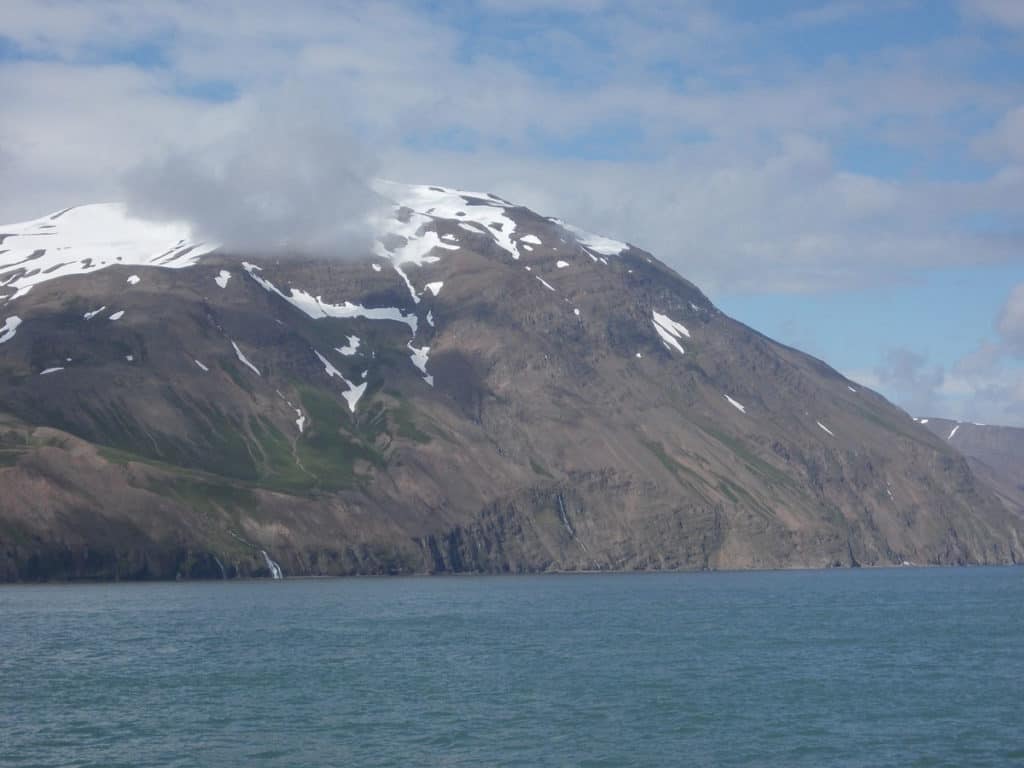
Recommended by Danielle of Live in 10 Countries
Husavik has a real reputation as the whale watching village of Iceland – it really is ideal for seeing whales in their natural habitat. Part of that is the great location, only about five hours away for anyone backpacking in Reykjavik. It’s a perfect stop off if you get out to see more of the island. Don’t just stay in the capital!
The pretty harbor is easy to find and boats head out several times a day to meet humpback, minke, and blue whales. You get insulated clothes to keep you warm and its a gentle, fun ride – so just bring your camera and get in on the fun. They even have evening cruises for when you can see the sunset and watch the natural world come out for the night.
The harbor has plenty of cafes, so you can warm up and get a snack or some local fish and chips.
Whale Watching in Dalvik, Iceland
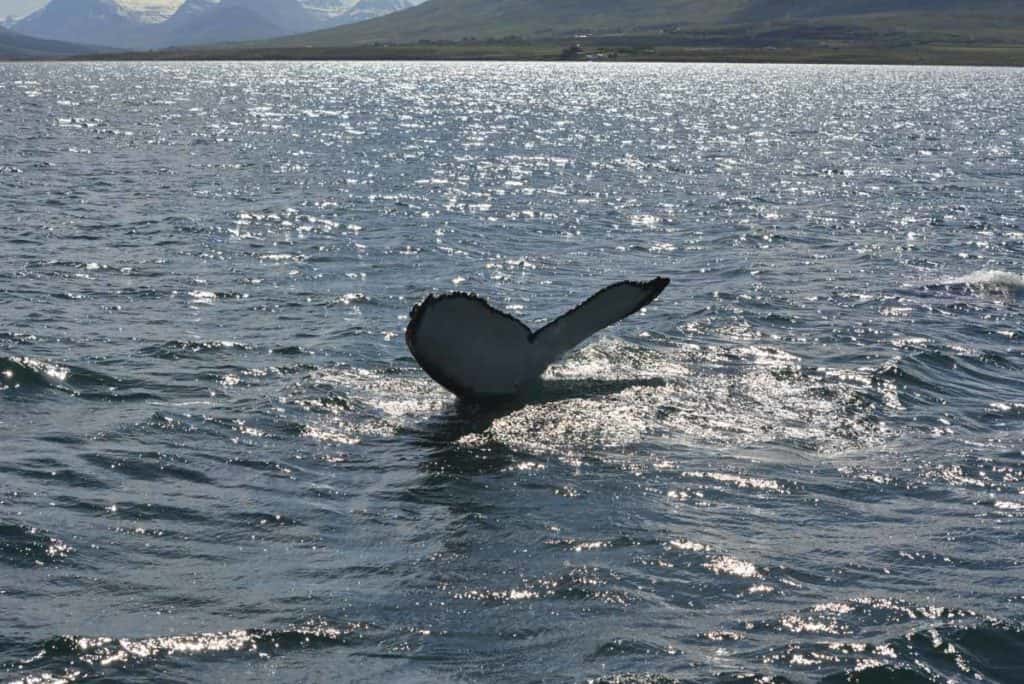
Recommended by Catherine from We Go With Kids
Our family went whale watching in Dalvik, a small town on Eyjafjörður fjord. Dalvik is located about 30-45 minutes north of Akureyri. We had planned to go whale watching in Husavik the previous day, but due to weather conditions, tours were unfortunately not running. The most common whales seen in this area of North Iceland are humpback whales and minke whales, and there are occasional sightings of blue whales, fin whales or killer whales. Dolphins and porpoises are also frequently spotted.
We only saw one humpback during our three-hour tour in North Iceland, and it was right next to our boat. At the end of the boat ride, everyone got a chance to try fishing, and my boys caught three large cod between them. Back at the tour office, we were able to taste the fish caught on the tour, which was a rare treat. Tours are available all year round, but the best time to go whale watching in Dalvik is between April and October.
Whale Watching in The Ligurian Sea
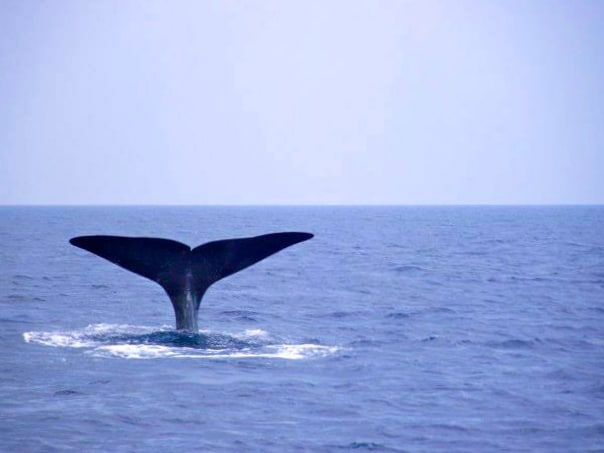
Recommended by Roshni of The Wanderlust Within
The Ligurian Sea is part of the Cetacean sanctuary, a protected marine area established in 1999 covering 100,000 square kilometers. The area spans all the way from France to Genoa and Sardinia and is one of the most beautiful areas of the Mediterranean. It is home to eight different species of cetaceans, including sperm whales, fin whales, Cuvier’s beaked whales, and long-finned pilot whales. The sanctuary has the largest amount of marine life in all of the Italian seas due to the abundance of food that can be found here.
The whale watching tours take place from June to September and usually include a marine biologist. They will be onboard to provide extra information about the whales and their habitats. There are several ports of departure including San Remo, Genoa, Imperia, and Savona, and tours can last from four to nine hours, costing between 35 to 40 EUR for a half day tour.
Whale Watching in Spain
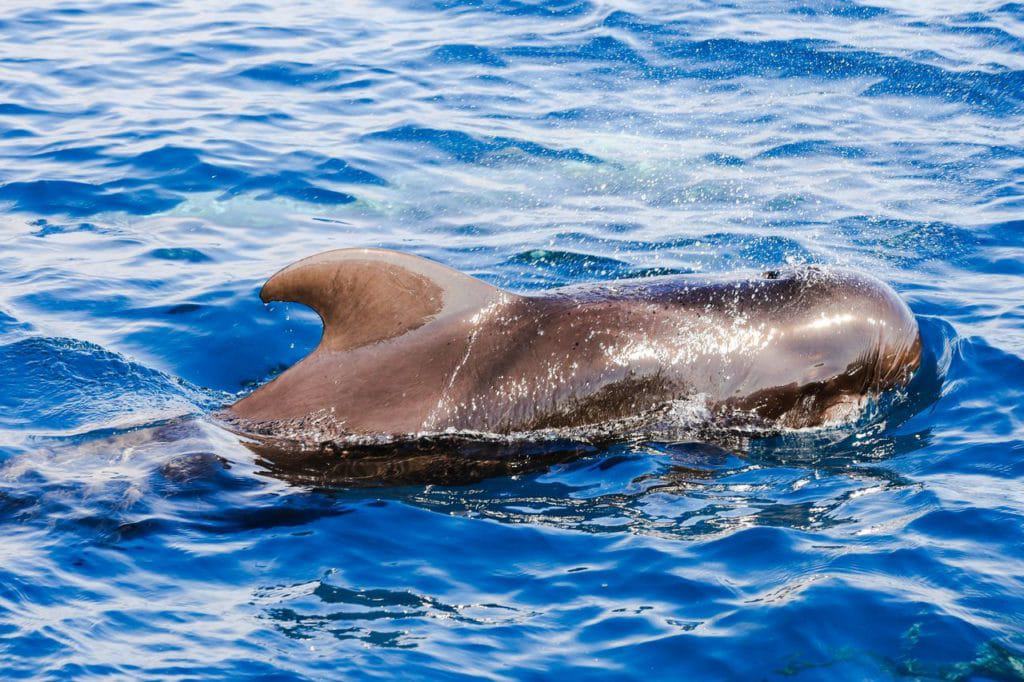
Recommended by Jenny and Steven of Tales From The Lens
The Spanish island Tenerife, located off the coast of Morocco in the Atlantic ocean is one of the best places in Europe to go whale watching. Thanks to a year-long temperate climate, as well as a sub-water geography ideal for whales to rest and feed, Tenerife attracts more than 21 species of marine mammal along its shoreline.
The most common and easier whale to spot is the Pilot whales which live all year long between the town of Costa Adeje and La Gomera island. A few large Catamarans leave the harbors of Puerto Colon and Los Cristianos on a daily basis for 2 to 5 hours excursions looking for the whales. During these trips, you’ll sail along the coast of Tenerife from where you will enjoy an incredible view over the island and its giant volcano El Teide. At the end of the tour, you will be offered to go for a dip in the ocean with a mask and snorkel. Some boats even have a bottom glass in order to see the whales underwater.
Apart from the pilot whales, you might also see Bottlenose dolphins which also live in the area the whole year, but also depending on the season, a few migrating animals such as the Atlantic spotted dolphins, Sperm whales, Humpback whales, Bryde’s whales, and even Blue whales!
Whale Watching in Asia
Whale watching in Mirissa, Sri Lanka
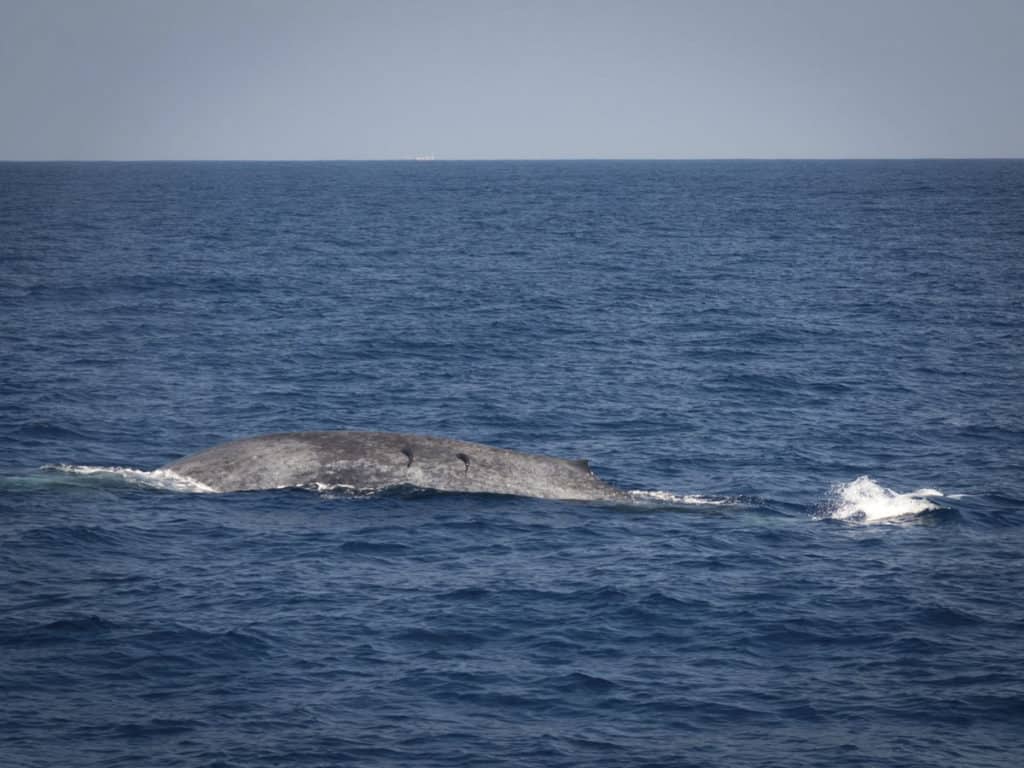
Recommended by Markus of The Roaming Fork
Whale watching in southern Sri Lanka operates from the beautiful and laid-back surfing town of Mirissa. Every morning, boats head out from the main port of Mirissa into the plankton-rich waters that surround the bottom tip of Sri Lanka.
As the boats head out into the Laccadive Sea, they are searching for its most famous inhabitant, the majestic blue whale. Although the blue whale will be the main whale spotted, rare sightings of sperm whales and short-finned pilot whales do occur. And given the marine-rich waters of this area, there are also likely to be bonus sightings of dolphins, turtles, and schools of tuna.
The season for whale watching in southern Sri Lanka is between November and April. At other times, boats will not venture out into the sea as the waters will be too rough due, primarily, to monsoon activity. The cost for a 4 to 5-hour boat trip is around $40, with plenty of operators in the town to ensure keen pricing. Should you not spot a whale during your trip, you can re-book another trip for free. Trips can be booked through hotels and homestays, or through one of the agencies located along the main road that runs through Mirissa.
Whale Watching in Bangkok, Thailand
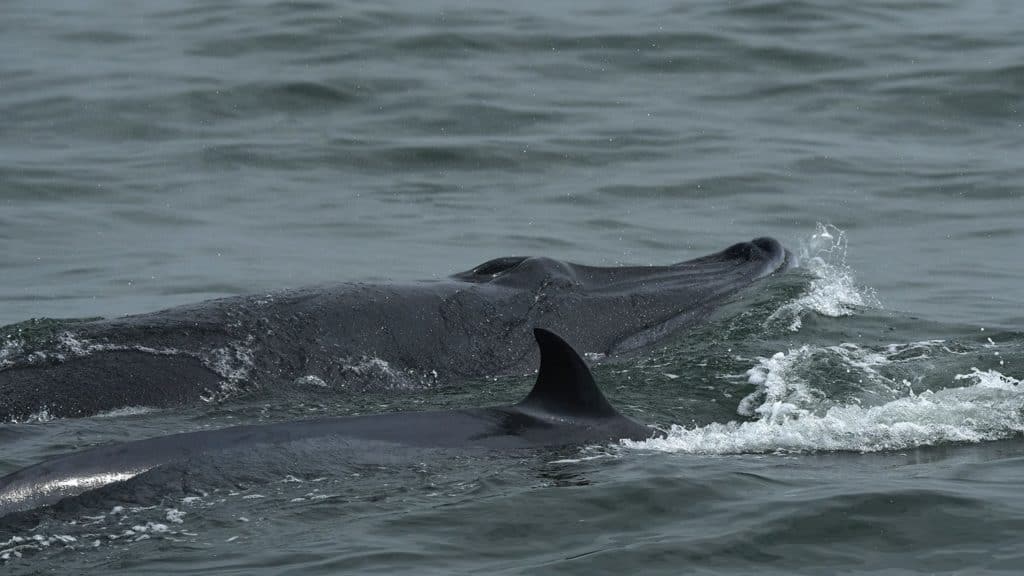
Recommended by Kate & Kris of Whatkateandkrisdid
Thailand is somewhere that lots of tourists visit every year, to chill out on the beaches and explore the cities. However, not many people realize you can go whale watching there, even from Bangkok. In the Gulf of Thailand, the area of water between Bangkok, Phetchaburi, and Pattaya is home to Bryde’s Whales. These 10+ meter baleen whales are the Eden whale subspecies and around 20 of them are known to live in that area.
You can go on a whale watching trip from Bangkok to see the Bryde’s Whales with Wild Encounters, Thailand, a day trip we’d thoroughly recommend. The crew is incredibly knowledgeable about whales and dolphins and passionate about the environment. It’s a full day trip, starting at sunrise where you head out by boat to find the whales, spend some time with them and then have the rest of the day enjoying the rest of nature from the boat.
Twenty-two species of cetaceans live in the waters of Thailand. As well as the Bryde’s whales, it’s common to see Irrawaddy dolphins in the Gulf of Thailand. Sometimes called ‘pink’ dolphins and ‘river’ dolphins, they are not really pink in color and tend to live in coastal waters, rather than in rivers. These cetaceans are endangered so it’s a joy to see them.
As the whales and dolphins there tend to be more resident than transient, there isn’t a specific season to see them, although you may want to plan your trip around the Thai seasons generally. In the Gulf area, we’d recommend coming in November-February, when it’s the cool season.
—
Thanks to all the amazing travel bloggers who helped contribute to this! I can’t believe how many places there are to see whales around the world.
If you haven’t seen it already, check out the second part of this post which covers the best whale-watching destinations in the Southern Hemisphere.
Have you been whale watching before? Let me know in the comments below!
Like it? Pin it for later!
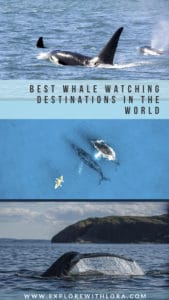

Very exciting piece of writing. I always wondered how can I plan a vacation that I can someday see the world’s biggest mammals, blue whale. I am going to keep this link safe for my next big holiday. Probably it would be Sri Lanka or Thailand. Thanks
So glad you found it helpful in planning your trip! I highly recommend Sri Lanka, it’s a wonderful country.
Thanks for sharing this amazing blog. Here all places are looking very attractive and natural. Yes, these places are the best whale watching destinations all over the world. Now, most of the tourists are very oriented to see and enjoy the splendid scenery of whale watching destinations around the coast of Iceland. One month before, I had visited Iceland and enjoyed their most beautiful whale watching the tour. Special thanks to Sea Trips Reykjavík who helped me this beautiful journey of Iceland by their vessel.